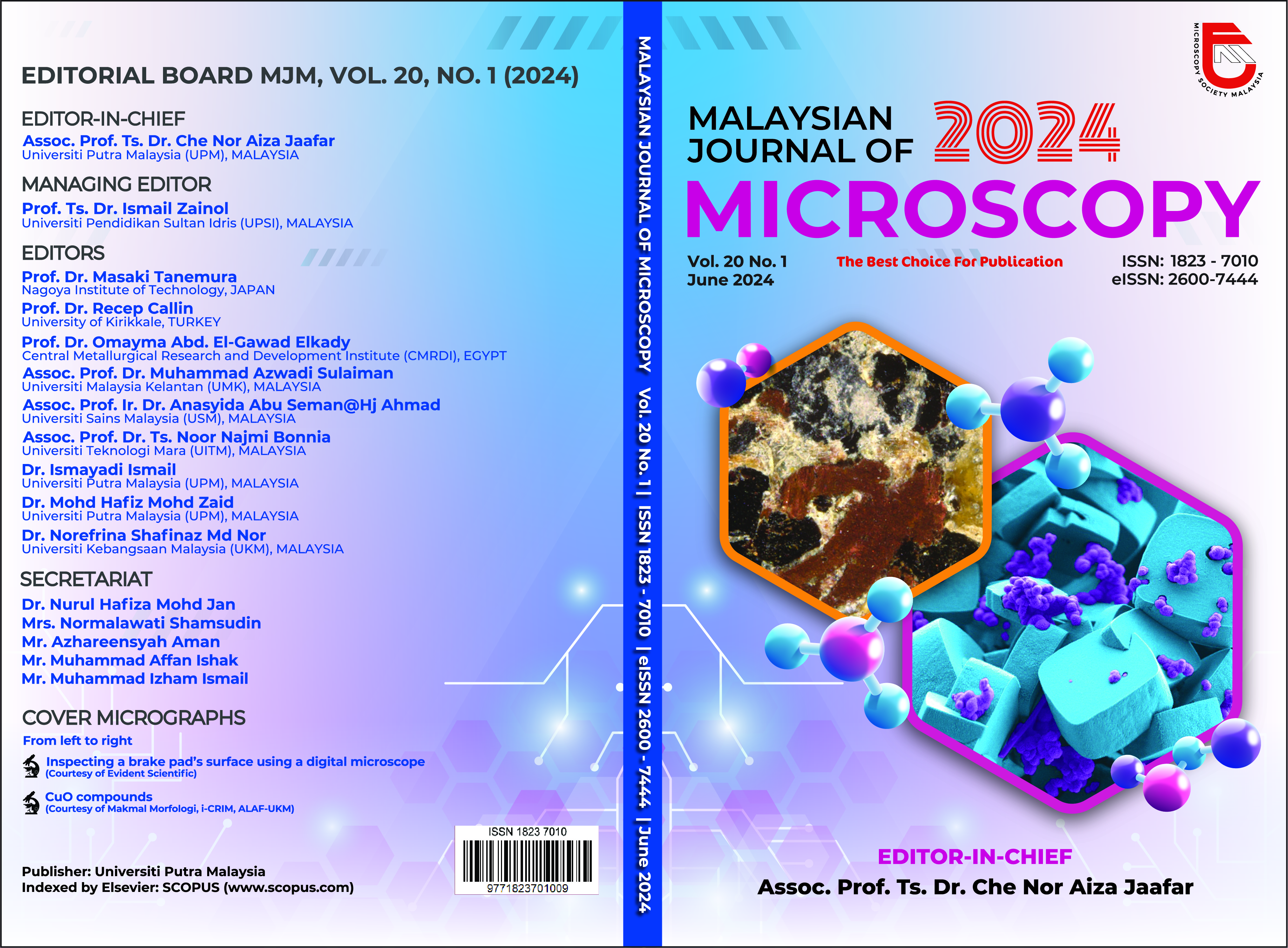INVESTIGATING THE CLAY MODIFICATION PROCESS OF GUA SAGU POTTERY USING DIGITAL MICROSCOPIC IMAGING TECHNIQUE
Abstract
This paper aims to determine the tempering material structure of Gua Sagu prehistoric pottery by examining the characteristics of clay paste modification through the identification of quartz grain morphology. The analysis was done by using the non-destructive digital microscopy method on selected pottery shards for 3D surface reconstruction imaging of both the cross-section and individual quartz grain, whereby their shape and dimensions were measured and studied. The results of the analysis revealed that the Gua Sagu pottery is highly rich in quartz (sand) mineral. The quartz grain shapes consisted of round-edged, sharp-edged and combination of either round- and sharp-edged or round- and spherical-edged. The presence of round and spherical-edged quartz grains shows that sand was mixed into the clay without undergoing any form of modification while sharp-edged quartz grains in angular form indicated that sand was pounded before being added to the clay. It can be concluded that, based on the findings of the microscopy study, the Gua Sagu pottery production involved two types of clay modification process (i) pottery tempered with pounded sand and (ii) pottery paste without tempering material. These scientific findings have shed new light on the origins of Gua Sagu pottery which could have been locally made or brought in from elsewhere to be used for cooking and/or storage purposes during ancient times.


